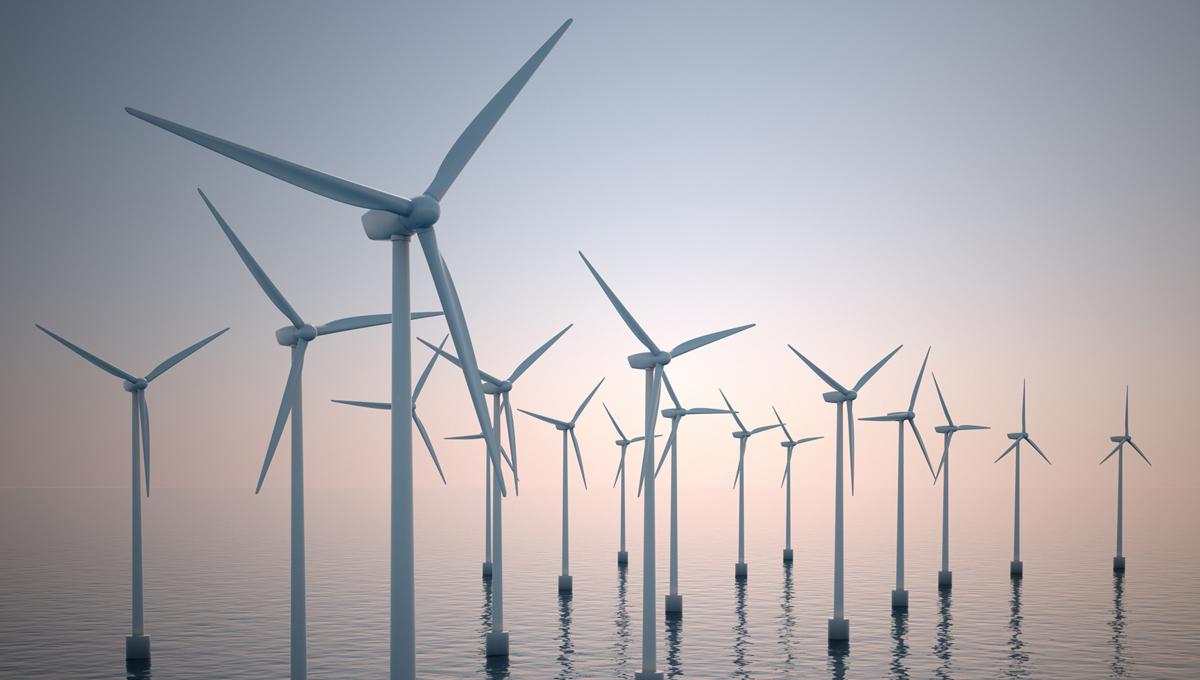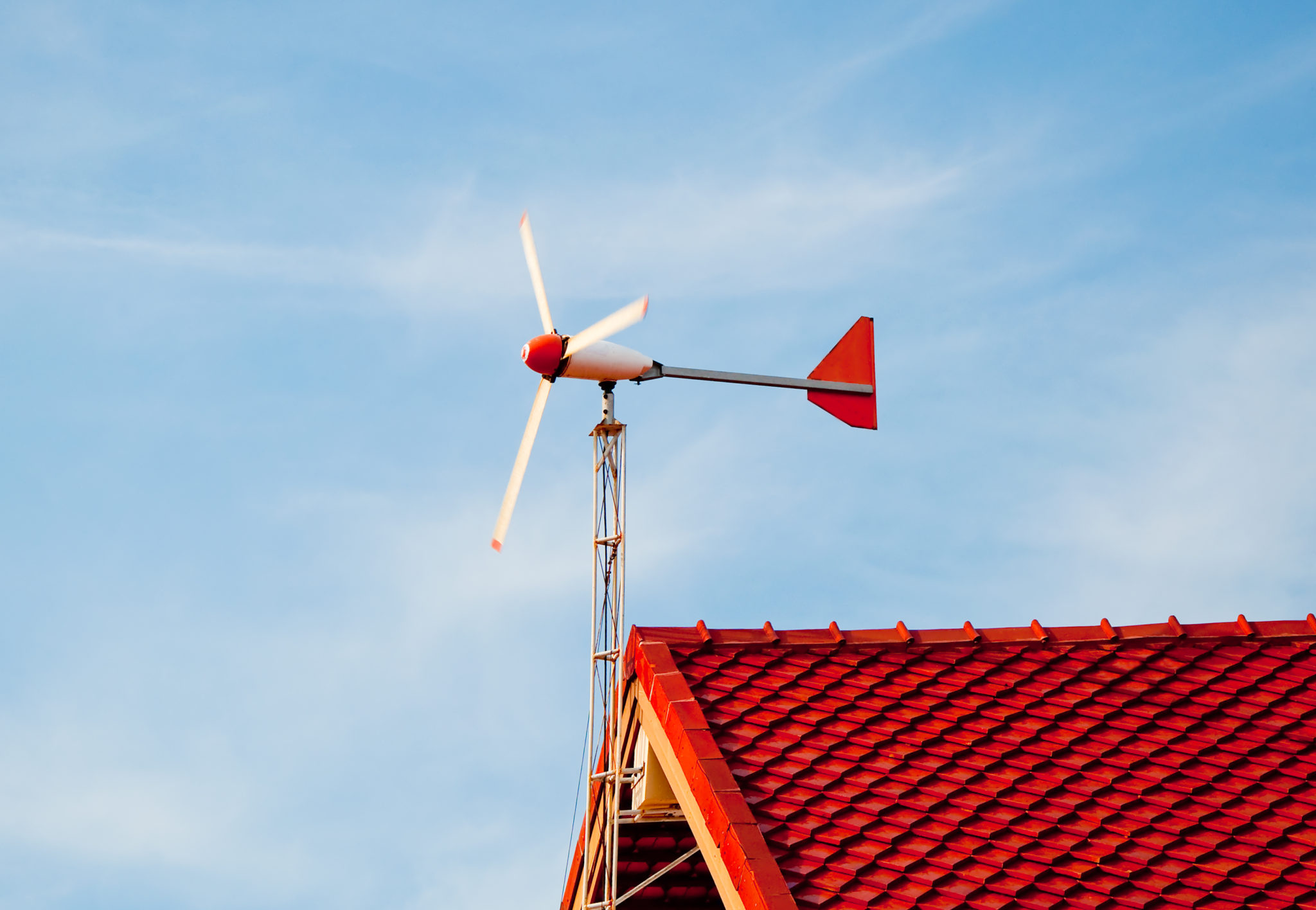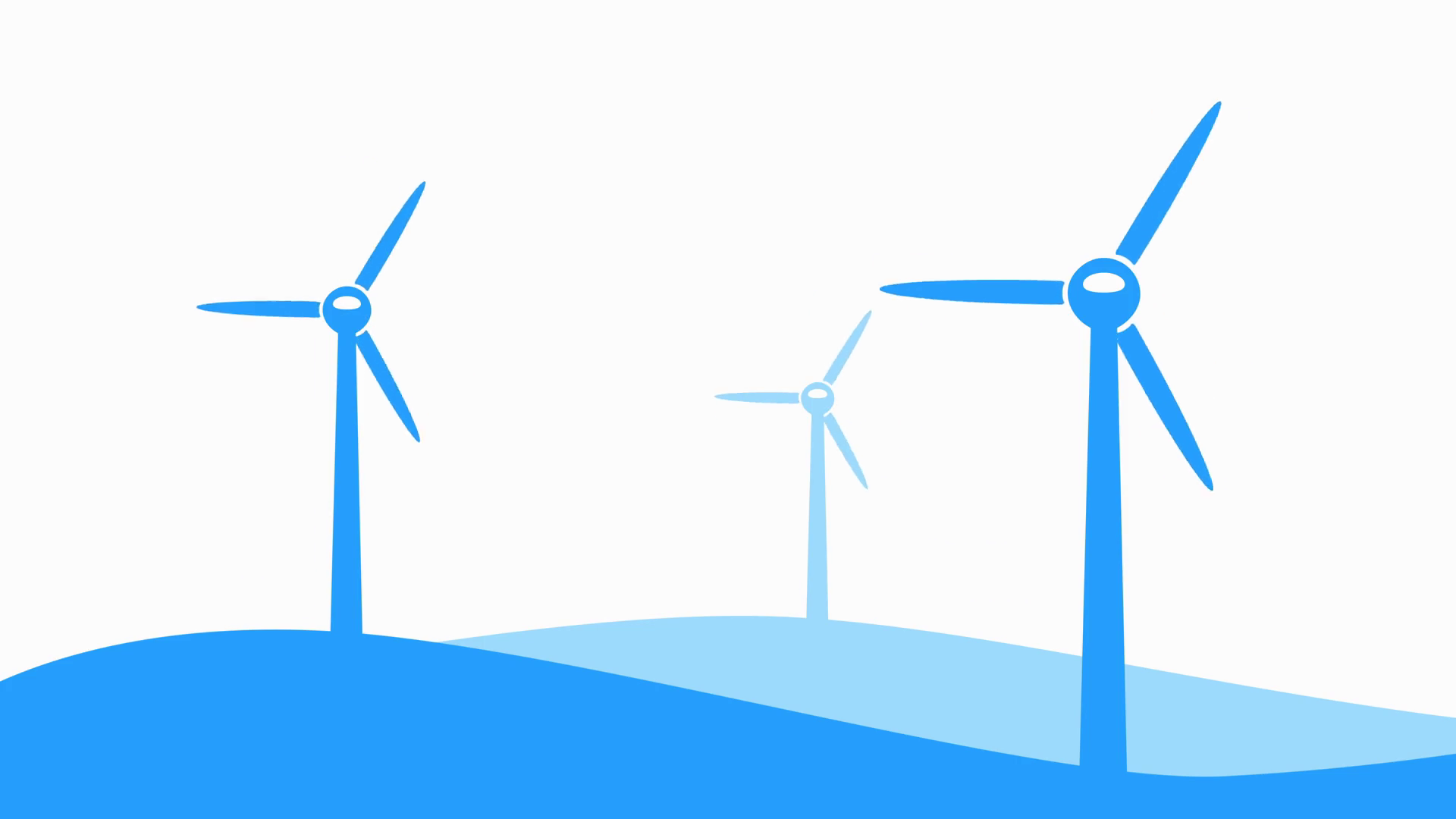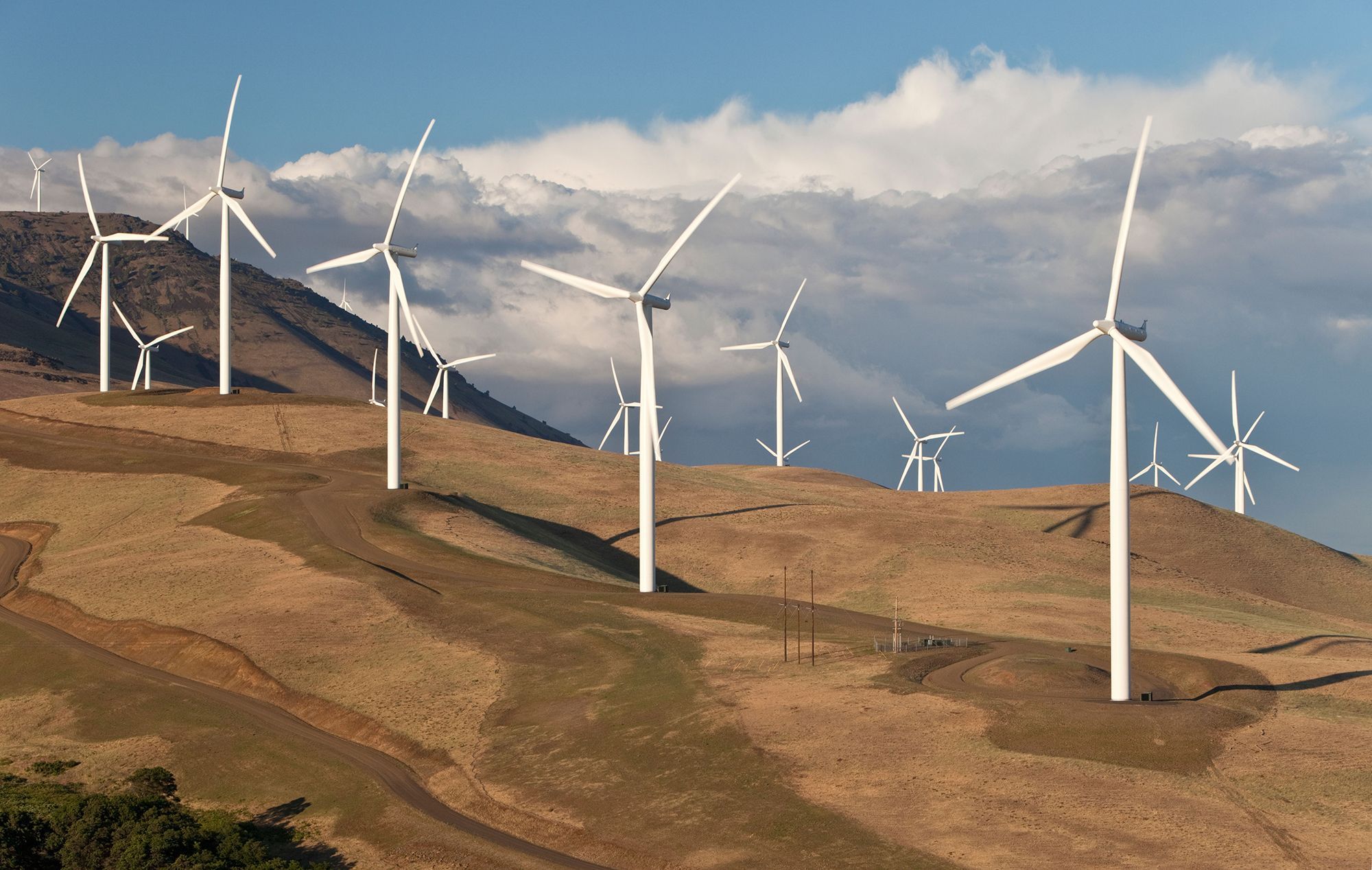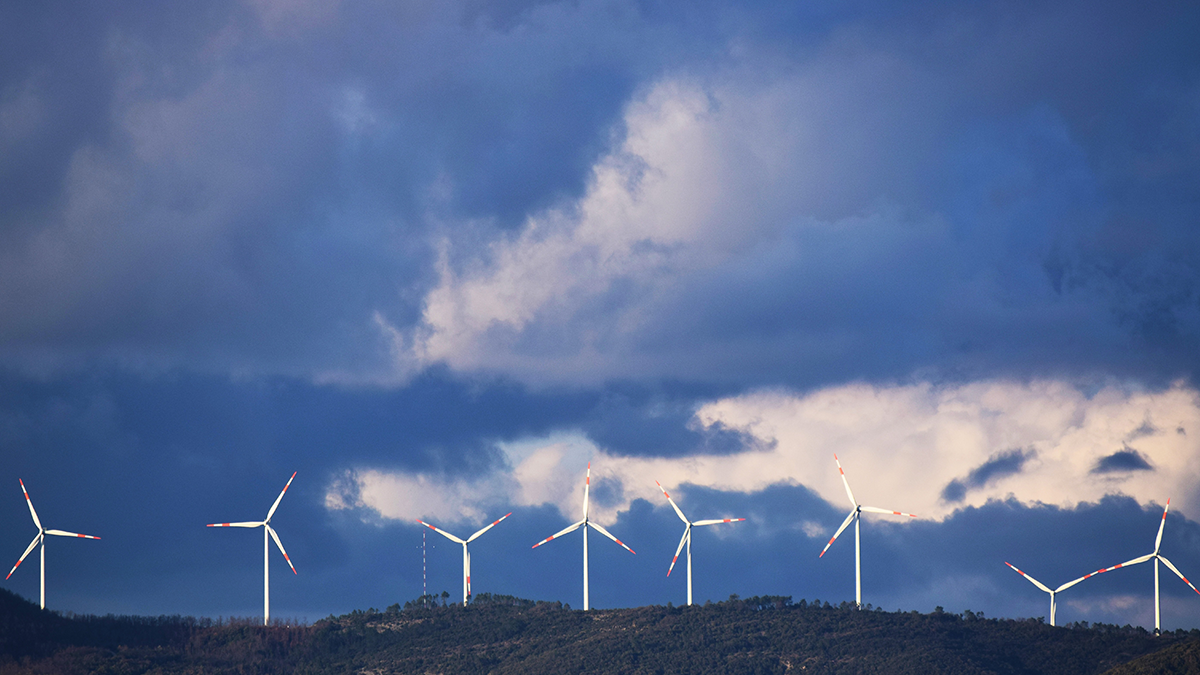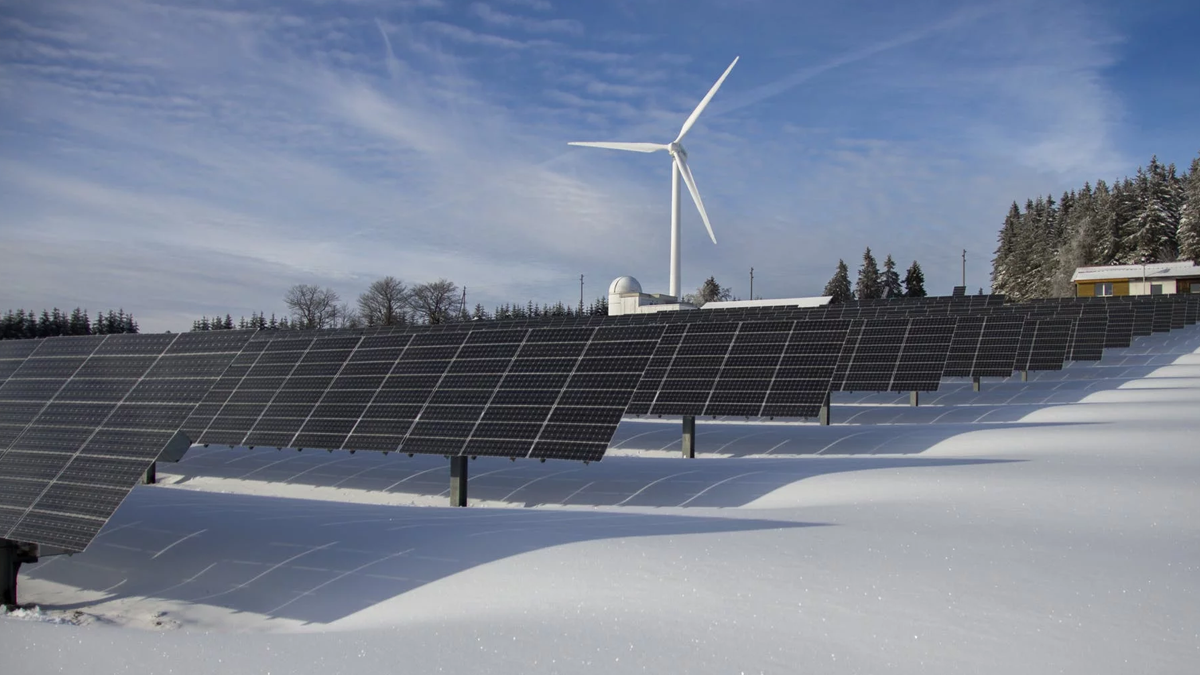There is abundant wind power around us but have you ever thought, how these magnificent structures – the wind turbines work?
If you have ever flown a kite or sailed a boat, you already know how strong the wind is. Harnessing wind power is an ancient concept- Windmills and wind turbines have been used to grind flour or to power machinery for hundreds of years. At the turn of this century, windmills and wind turbines have advanced a lot in their mechanism.
The wind is a cumulative effect of change in pressure and temperature. A Wind turbine entraps the wind and converts it into a renewable energy source. In brief, wind turbines utilize the wind’s kinetic energy and generate electricity.
What is the basic structure of a wind turbine?

- A wind turbine usually consists of 3-propeller like blades called rotors.
- A nacelle consisting of a gearbox and an AC generator that converts mechanical energy into electric energy. The gearbox and AC generator are attached by shafts.
- An anemometer measures the speed and direction of the wind.
- The rotation of the blades is controlled by Yaw Drive.
- The rotors, nacelle, anemometer, Yaw drive are attached to a pole-like structure called the tower. On average, the tower is usually 20 meters high in residential areas.
- The power cables attached carry electric energy to a transformer.
- A transformer to convert the electric energy to deliverable electricity.
How is electricity generated from wind turbines?
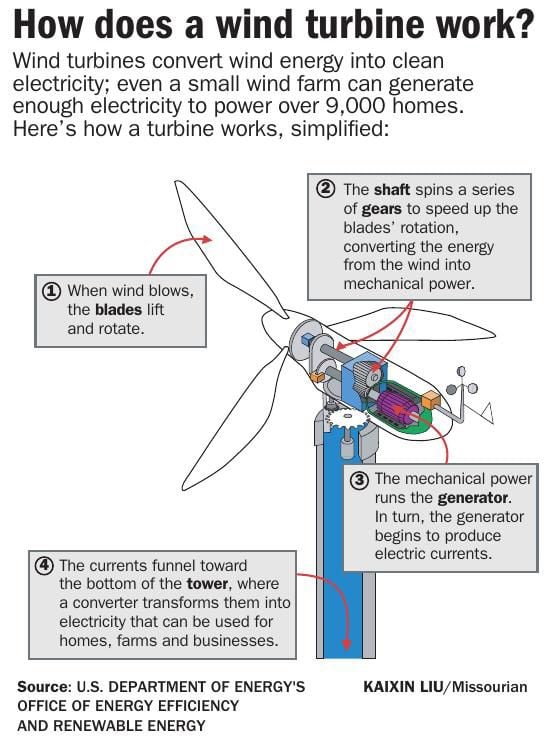
Wind turbines rotate when the wind hits the blades: It need not be a strong wind. Wind Turbine Blades can rotate at a wind speed of 10 to 12 knots which is measured as a gentle breeze.
- The huge rotor blades in front of the wind turbine are specially curved shaped as in the airfoil wings on an airplane. When wind flows around the airplane’s wings it lifts it upwards. Similarly, when the wind blows past a turbine’s blades, it spins them instead.
- Inside the nacelle, the main body on top of the tower behind the blades, a gearbox converts the low-speed rotation into high-speed, to supply the AC generator.
- The AC generator takes the kinetic energy from the rotating shafts and converts it into electricity.
- An anemometer (automatic wind speed measuring device)mounted on the back of the nacelle provides the wind flow measurement and the direction.
- With the help of the measurements, the entire top of the turbine (nacelle and the rotors) are rotated so that it captures the oncoming wind to the maximum with the help of the yaw-drive. If it is too windy(stormy situations), brakes are applied to stop the rotors from turning to prevent any damage.
- The electric current produced by the wind turbine flow through cables into a transformer for further supply of clean, green energy!
Do wind turbines produce AC or DC?
The wind turbine generators produce alternating current (AC) electricity. Sometimes, a wind turbine may hold a converter that changes AC to DC (Direct Current) and back again, so that the electricity produced matches the frequency and phase of the power grid it connects. The difference between AC and DC is the flow of electrons. In AC, the electrons keep switching directions; while in DC, they flow uni-directional.
How much electricity can a wind turbine generate?
It totally depends on the size and capacity of a wind turbine and the climatic conditions of that area. To frame a rough idea, a 1 KW domestic scale wind turbine, in favorable condition, may produce up to 2000 KWh per year (enough to power 2 large US houses). On the other hand, a 5MW offshore wind turbine could easily extract around 22, 00,000 KWh per year!
What are the types of wind turbines?
As we create a mental image of a wind turbine, we think of a tall pole with a 3-blade fan-like structure attached at the top situated across a farm or field. That is the most common type of wind turbine. But there are various types of wind turbines. The two major types of wind turbines and their sub-types are notes below:
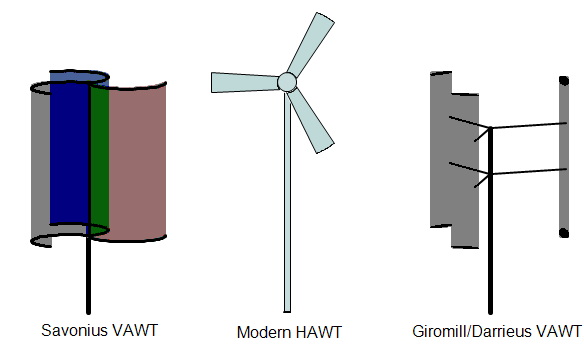
Horizontal axis wind turbine (HAWT):
Horizontal axis wind turbine dominates the majority of the wind industry. Horizontal axis means the rotating axis of the wind turbine is horizontal, or parallel with the ground. In big wind turbine fields, horizontal axis wind turbines are almost all you will ever see. The advantage of horizontal wind is that it can produce more electricity from a given amount of wind. So if you are trying to produce as much wind as possible at all times, the horizontal axis is likely the choice for you. The disadvantage of the horizontal axis however is that it is generally heavier and it does not produce well in turbulent winds.
Types of HAWT:
- Up-wind Turbines
- Down-wind turbines
Vertical Axis Wind Turbines (VAWT):
In Vertical axis wind turbines, the rotational axis of the turbine stands vertical or perpendicular to the ground. Vertical axis turbines are primarily used in small wind projects and residential applications. Vertical axis turbines have the ability to produce well in turbulent wind conditions. Vertical axis turbines are powered by the wind coming from all 360 degrees, and even some turbines are powered when the wind blows from top to bottom. Because of this versatility, vertical axis wind turbines are thought to be ideal for installations where wind conditions are not consistent, or due to public ordinances, the turbine cannot be placed high enough to benefit from steady wind.
Types of VAWT :
- Savonius Turbines
- Darrieus Turbines
- Giromill Turbines
- Cyclo-turbines
Where can wind turbines be installed?
Wind turbines can be installed at places that have a strong, reliable wind flow like a hilltop, coastal areas, open plains, or even off-shore. Wind turbines will be most favorable in scarcely populated or unpopulated places with inexpensive access to power grids. Also, certain sites which currently use polluting sources for electricity generation can be substituted by wind farms. A single wind turbine of around 1-1.5 kilowatt can be installed for domestic purposes around or above your own house!
Are wind turbines cost-effective and durable?

A leading website on renewable energy quotes “Wind power is cost-effective”. It also states that – “Land-based utility-scale wind is one of the lowest-priced energy sources available today, costing 1–2 cents per kilowatt-hour after the production tax credit. Because the electricity from wind farms is sold at a fixed price over a long period of time (e.g. 20+ years) and its fuel is free, wind energy mitigates the price uncertainty that fuel costs add to traditional sources of energy.” A wind turbine once installed functions efficiently for up to 20-25 years with adequate maintenance. Hence, one can conclude that wind turbines are the efficient, cheapest, and durable renewable energy source available to us.
Which countries around the globe generate electricity from wind turbines?
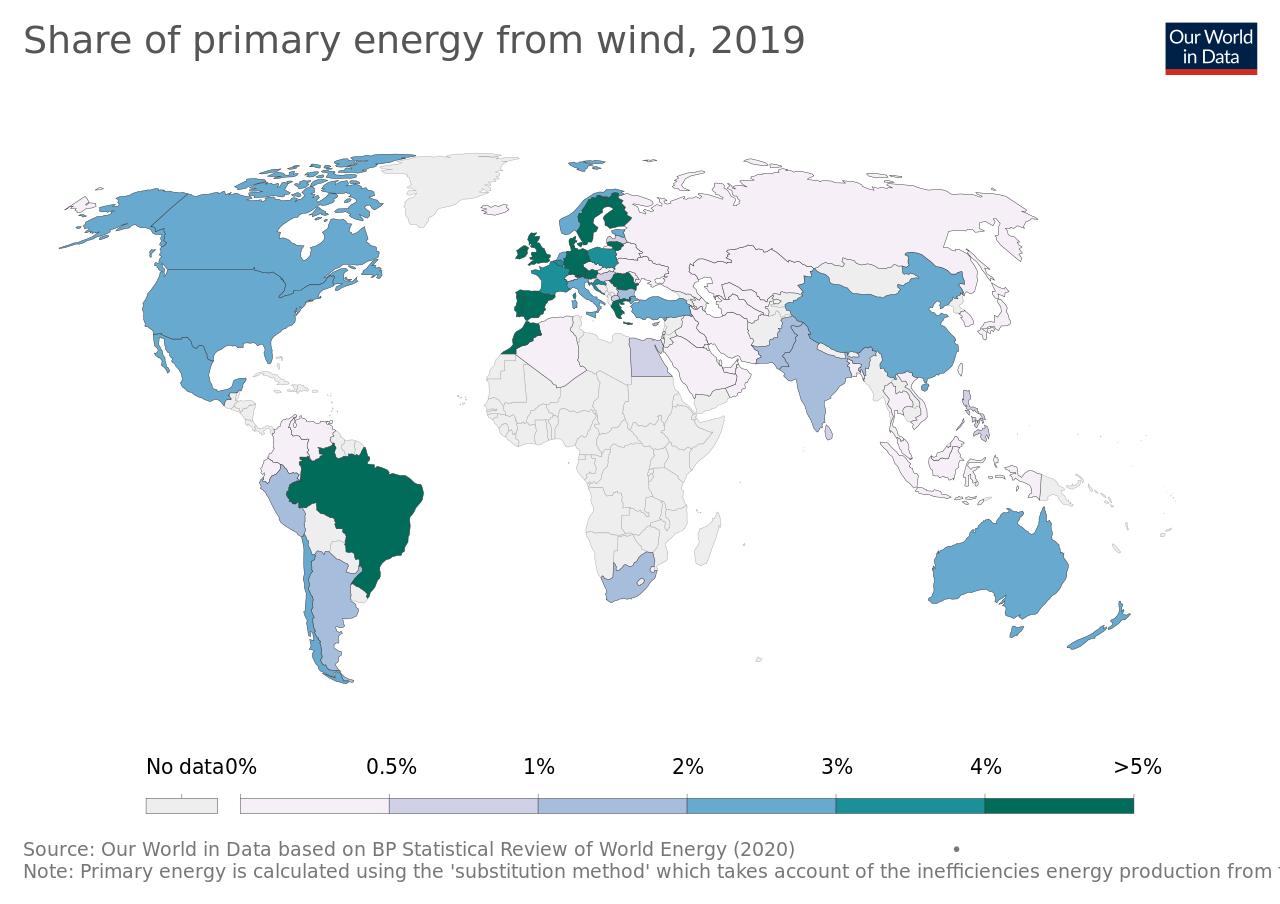
Wikipedia has listed the world’s top 10 countries that generate electricity from wind turbines as follows:
The world has a lot more scope for innovations and practical implementation in the field of wind energy. The wind is virtually free and wind turbines are cheaper and durable than any other renewable energy source. The world should put its foot down and opt for this better, cleaner, and abundant source of energy.
What are the advantages and disadvantages of wind turbines?
Wind energy is a major contributor to clean and renewable electricity. Following are the advantages of wind turbines:
- Wind energy is renewable and sustainable: wind energy is abundant in nature and will never run out like any other fossil fuel. Wind turbines are a reliable option to meet our future energy demands.
- It’s good for the Environment: Wind turbines are one of the most environmentally friendly energy sources known to mankind. They don’t pollute at all whilst generating electricity. They have no negative impact on the earth, the water table, or the quality of the air we breathe. Wind turbines have zero carbon emissions in their operation.
- Wind Turbines reduce fossil fuel consumption: Generating electricity from wind turbines reduces the need to burn fossil fuels. It conserves the dwindling fossil fuel reserves and reduces carbon emissions.
- Wind energy is free: Wind is available everywhere (off-shore and on-shore). It is absolutely free and can generate a vast amount of energy.
- Wind turbines have a smaller footprint: Wind turbines have a relatively smaller land footprint. The towers are high above the grounds and their impact on the land base is negligible. Wind turbines pose hardly any inconvenience to the surrounding land or human activities.
- Wind turbines are available for industrial and domestic use: Wind turbines aren’t limited to vast wind farms. Smaller turbines can be used to generate electricity for farms, factories, and even private residences. Portable wind turbines are a new technological innovation and can power small devices on the go!
- Wind turbines can provide electricity to remote areas: It is impractical and very expensive to connect remote locations to the main power grid. Wind turbines come in handy for electricity supply in remote areas as research facilities or small villages.
- Wind turbines are becoming cheaper: Government subsidies and incentives for the construction of wind turbines have played a major role in cost-cutting for wind turbine installations.
- Wind turbines are low maintenance: The technological advancement of wind turbines has made them enough efficient to function without maintenance for several months. That eventually eliminates large amounts of maintenance costs.
- Wind turbines have low running costs: As wind turbines don’t require any fuel to operate (just free wind, of course!) they have low running costs. Utility companies just have to purchase, install and maintain the wind turbines.
- Wind turbines have huge potential: Wind energy is available abundantly compared to other renewable sources as geothermal energy or hydroelectricity. Most regions in the world have a suitable location for wind turbines or wind farms to work efficiently.
- Wind turbines can increase energy security: By using wind turbines, a country can reduce its dependency on the external supply of natural resources, thus increasing its energy security.
- The wind industry creates jobs: According to a report by the International Renewable Energy Agency (IRENA), the wind power industry created 1.15 million jobs in 2017. One can find a job in the wind industry in the manufacturing, installation, or maintenance of wind turbines. You can even find a job as a wind energy consultant. The opportunities are endless!
We have looked upon the endless advantages of wind turbines. Now let’s take a look at its disadvantages:
- The wind fluctuates: The wind in certain locations is not constant which can cause serious efficiency problems for a wind turbine. But, nowadays, wind energy consultants are available to pick a suitable spot for the installation of wind turbines where the wind turbines work efficiently.
- Wind turbines are expensive: Although the costs have reduced significantly, the wind turbines are still considered expensive. The purchasing and installing of wind turbines is expensive. But once it starts operating, it can repay its own costs and create profit for the owner within 3-6 months.
- Wind turbines pose a threat to wildlife: Wind turbines pose a threat to wildlife- mainly bats and birds. But a recent study suggests that wind turbines pose less threat to wildlife than other man-made structures (as cell phone masts/radio towers) do.
- Wind turbines are noisy: Large wind farms add to noise pollution. This issue is one of the biggest impacts of wind turbines. Most wind turbines are installed away from populated areas. Also, advanced wind turbines have been installed with vibration isolators to diminish the noise significantly.
- A wind turbine creates Visual Pollution: This point is of personal opinion as lots of people do like the picturesque scene of wind turbines on vast fields or hilltops. But some people don’t find that visually pleasing. Recently, a French inventor, Jerome Michaud-Lariviere invented the concept of “Wind Trees”. Wind trees compose of 3-steel trunks that stem into thinner branches on which 36 leaf-shaped wind turbines are attached. It can exploit winds from a gentle breeze to powerful gusts. It is absolutely fascinating and visually appealing as well! Its plant-like compact structure and aesthetically pleasing appearance make it a convenient form of wind turbine for populated areas as cities, IT Parks, and Industrial areas.

What is the recent technological advancement in wind turbines?
In recent times, the world has turned its focus towards renewable energy sources and one of its outcomes is the technological advancement in wind turbines. The following can be accounted for the major advancements:
- Smaller tower height (20-24 m) with more rotor blades, 4-blades, or more.
- Use of rare earth permanent magnets in place of ferrite magnets for lighter generators and reduce a generator’s ‘ cogging torque’ ( enhance low-speed start-up).
- Active pitch controls to maintain energy capture at very high wind speeds.
- Vibration isolators to reduce noise/sound.
- Advanced blade designs.
- Means of self-protection in stormy winds.
- Attempts to make wind turbines visually appealing.
- Inverter integrated nacelle (rotor-hub).
Today, wind energy is the clean energy source to rely on for the long-term future. A wind turbine virtually creates reliable, efficient, and pollution-free energy. It is affordable, clean, and sustainable. Whether you love or loathe the presence of wind turbines, this technology is the key to fight against global warming and provide clean and green energy to our future generations!

